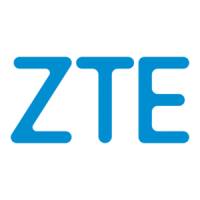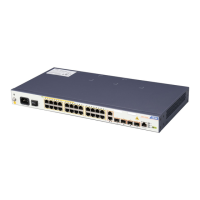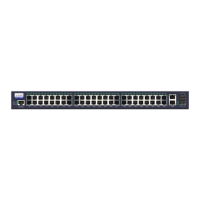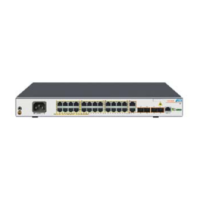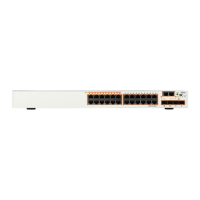ZXR10 2920/2928/2952
(V1.0) Access Switch User Manual (Volume I)
178 Confidential and Proprietary Information of ZTE CORPORATION
FIGURE 33 QINQ NETWORKING
User network 2
CVLAN 1~100
SPVLAN 10
customer port
SPVLAN 10
uplink port
Switch A
PE
PE
Switch B
User network 1
CVLAN 1~100
SPVLAN 10
customer port
SPVLAN 10
uplink port
ISP network
SPVLAN: Service Provider VLAN CVLAN: Customer VLAN
User network is generally connected to PE through Trunk VLAN
mode. Internal Uplink ports of the ISP network are
symmetrically connected through the Trunk VLAN mode.
When a packet is sent form user network 1 to customer port
of switch A because PORTBASE VLAN-based customer port
does not identify the tag when receiving the packet,
customer port processes the packet as an untagged packet
no matter whether this data packet is attached with VLAN
tag or not. Packet is forwarded by VLAN 10, which is
determined by the PVID.
Uplink port of switch A inserts outer tag (VLAN ID: 10) when
forwarding data packet received from customer port. Tpid
of this tag can be configured on switch. Inside ISP network,
packet is broadcast along port of VLAN 10 until it reaches
switch B.
Switch B finds out that port connected to user network 2 is a
customer port. Thus, it removes outer tag in compliance
with conventional 802. 1Q protocol to recover original
packet and sends packet to user network 2.
In this way, data between user network 1 and user network
2 can be transmitted transparently. VLAN IDs of user
network can be planned regardless of conflict with VLAN IDs
in ISP network.
Configuring QinQ
This topic describes the PVLAN configuration on ZXR10
2920/2928/2952.
For the PVLAN configuration, perform the following steps.
1. To add/delete a Customer port, use command set qinq
customer port <portlist> {enable|disable} in global
configuration mode. This is shown in
Table 289.
User Network
Purpose
Steps
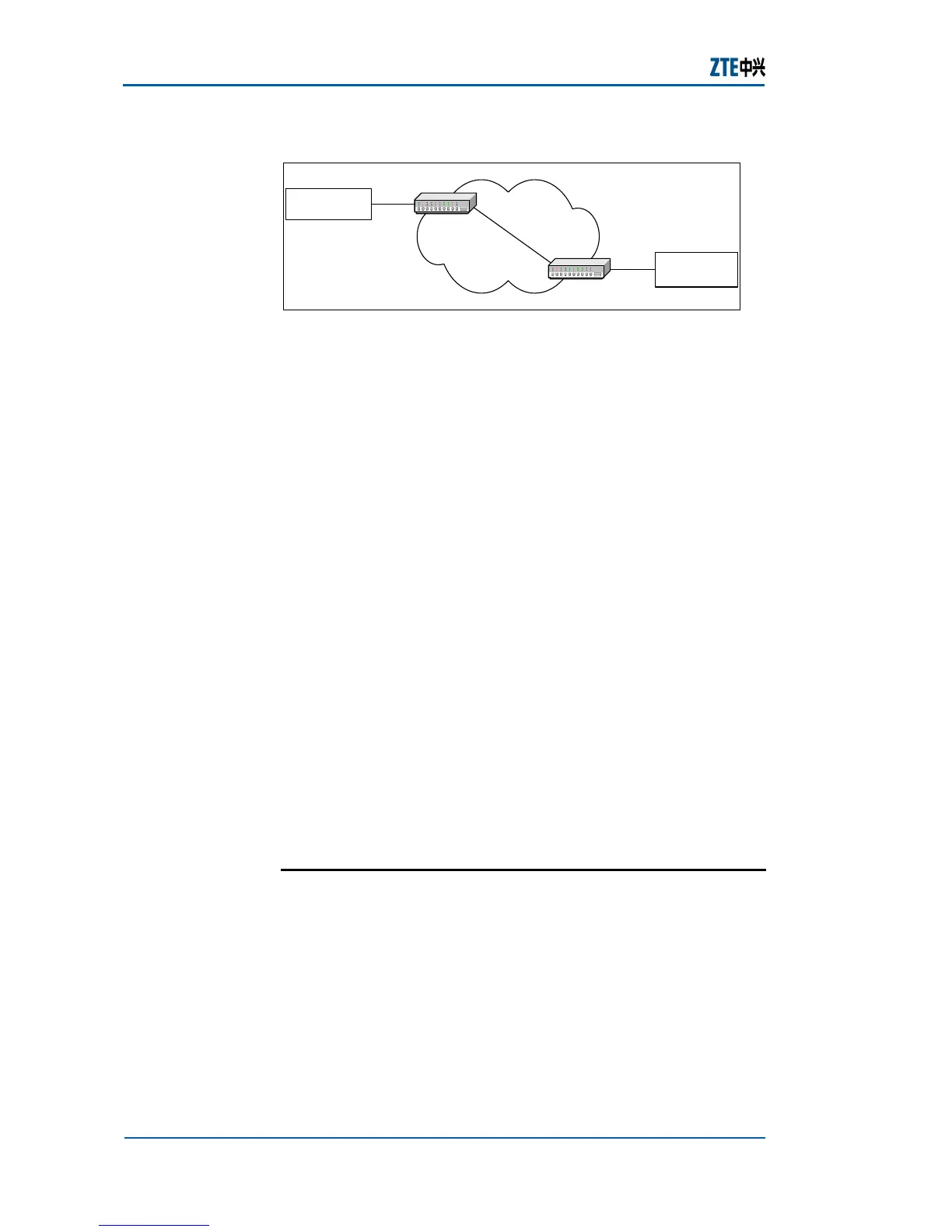